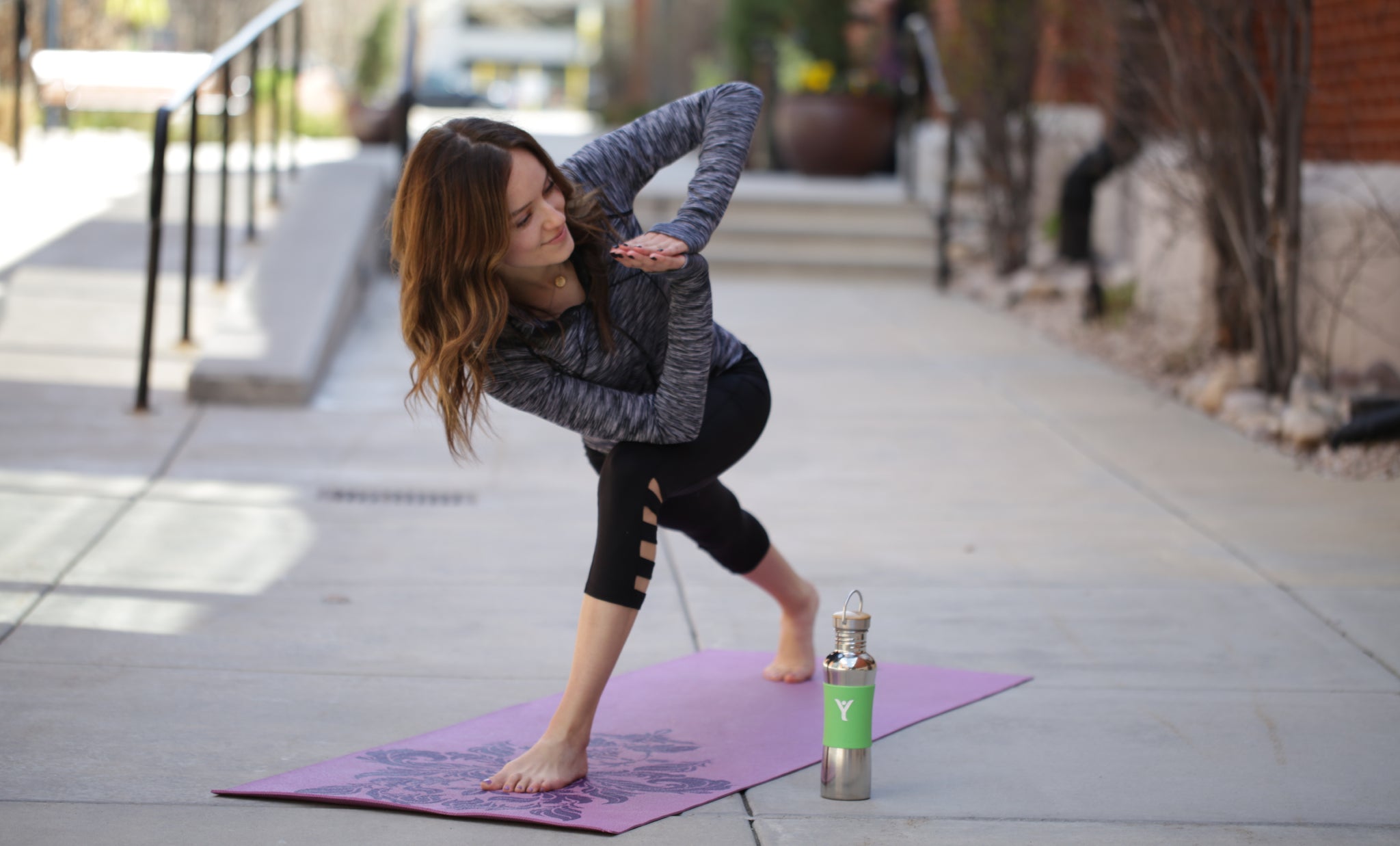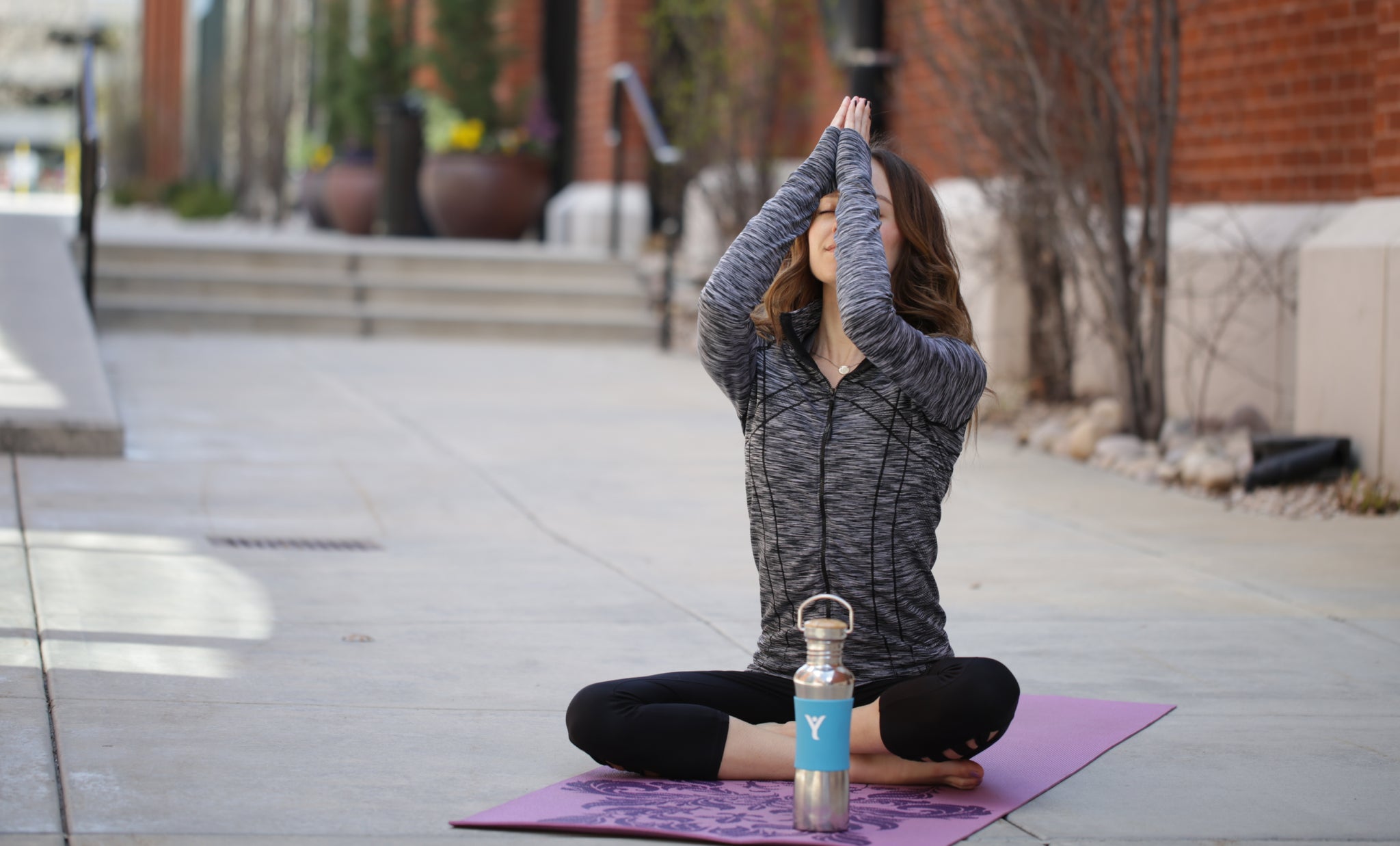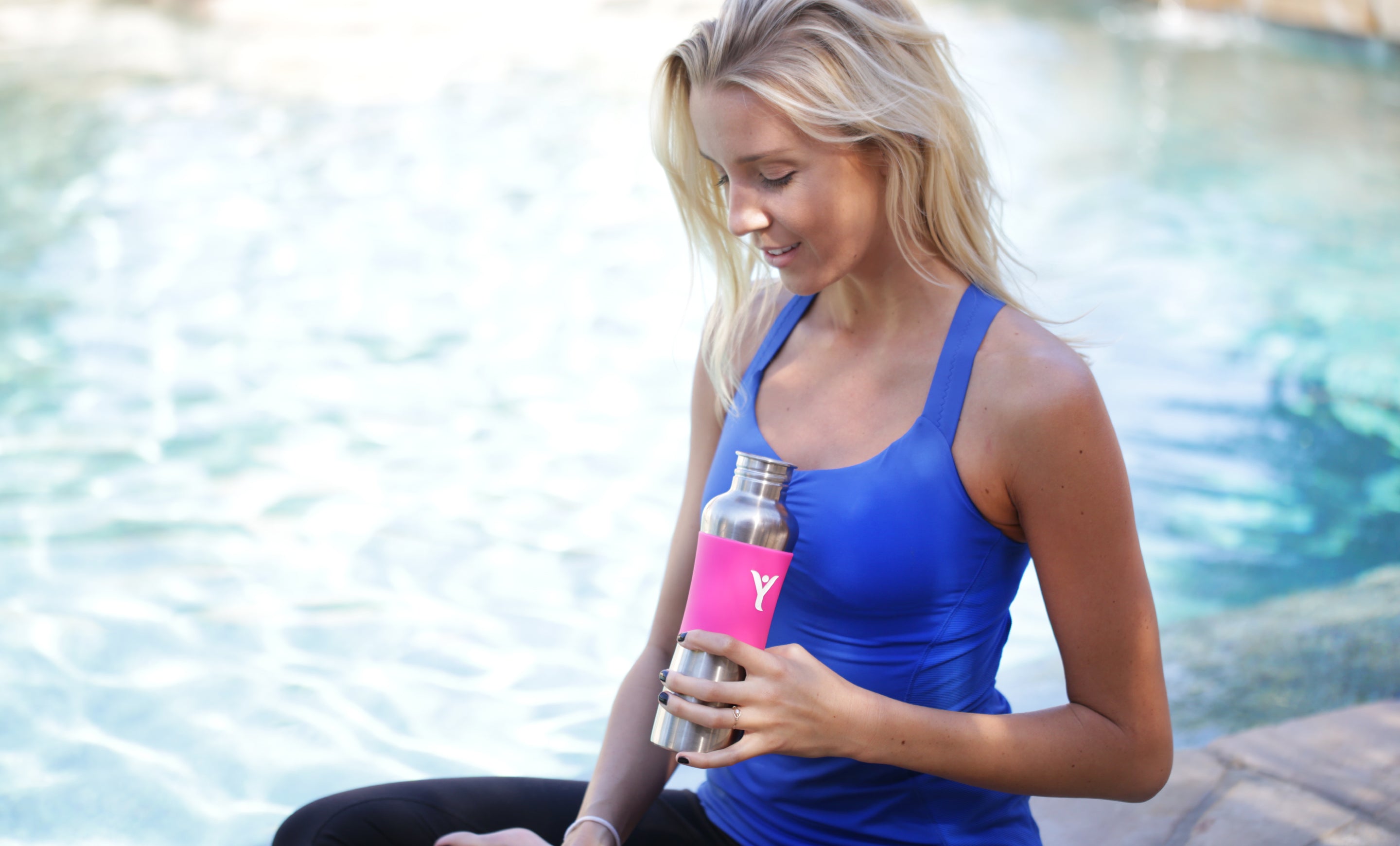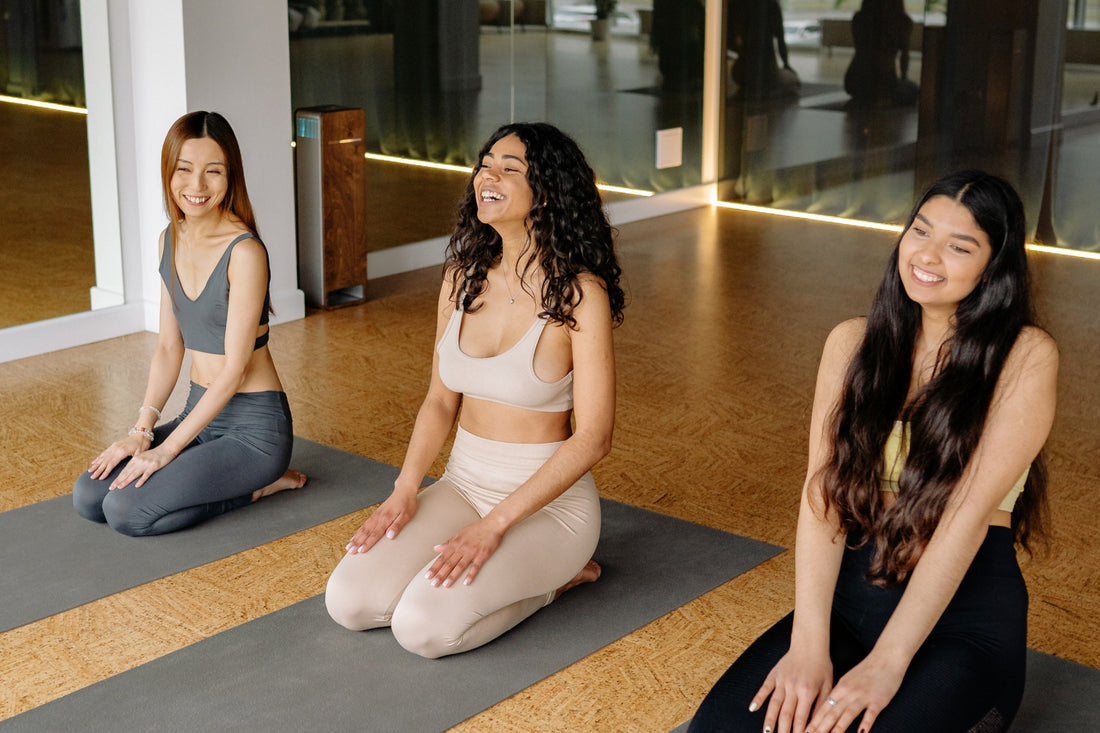Si leíste la Parte I de Cómo desarrollar tu práctica personal de yoga, recordarás que te prometieron una introducción a Surya Namaskara (Saludos al sol). ¡Y aquí está!
¿Qué son los saludos al sol?
Los saludos al sol son una secuencia de posturas y movimientos conectados que, cuando se practican en conjunto, forman una rutina completa de fortalecimiento y estiramiento. Tradicionalmente, los saludos al sol se realizan al comienzo de una práctica física de yoga. Calientan y estiran los músculos y preparan el cuerpo para un trabajo energético y meditativo intensivo.
Hay dos tipos de surya namaskar: simplemente denominados surya namaskara A y surya namaskara B. La segunda ronda se basa en la primera añadiendo posturas del guerrero (o estocadas, en la versión modificada) para lograr una progresión en la intensidad física.
Debido a la intención de preparar para el trabajo y llevar los cuerpos físico y energético a un estado adecuado para la práctica, las posturas y movimientos dentro de los saludos al sol están diseñados para estirar y fortalecer todos los grupos musculares principales.
Por eso, cuando estés en el proceso de desarrollar tu propia práctica en casa, aprender a hacer el saludo al sol es invaluable. Si haces solo 5 surya namaskar A seguidos de 5 surya namaskar B y terminas con savasana (Postura del Cadáver), habrás completado la práctica en unos 15 minutos. Es el lugar perfecto para comenzar.
Los beneficios

En lo que respecta al desarrollo de tu práctica personal, los beneficios de dominar los saludos al sol son enormes. La secuencia te brinda la oportunidad de perfeccionar tu propiocepción y tus habilidades de movimiento.
Aprenderás a manejar el ritmo de una secuencia de yoga y el potencial de progreso de tu propio cuerpo. Además, comprenderás tus limitaciones actuales, lo que te ayudará a saber cuándo debes modificar las posturas para adaptarlas a tu cuerpo y te dará una idea clara de las áreas que deseas mejorar en tu práctica física.
La práctica regular del saludo al sol :
-
Aumenta la fuerza y el tono muscular en la parte superior del cuerpo, el core y las piernas.
-
Mejorar la resistencia física
-
Mejorar la flexibilidad de los isquiotibiales, las caderas, los hombros, los músculos superficiales de la línea posterior y los músculos superficiales de la línea frontal.
-
Te enseñaré a moverte con la respiración y a usar la respiración para apoyarte a través de posturas y movimientos.
- Equilibrar el trabajo muscular en ambos lados del cuerpo.
La cuestión de la respiración es especialmente importante. El uso consciente y eficaz de la respiración es una parte crucial de cualquier práctica de yoga. Y en el saludo al sol, cada movimiento se realiza en armonía con la respiración. Puede llevar un poco de tiempo comprenderlo realmente, pero cuando lo logras, ¡se siente un poco mágico!
Las secuencias del saludo al sol son ideales para aprender a moverse con la respiración porque las transiciones y las posturas son simples y puedes moverte lentamente para darte tiempo de experimentar la diferencia entre trabajar a pesar de la respiración y trabajar con la respiración.
El desglose: cómo se hace

Surya namaskara A (Saludo al sol A) se compone de las siguientes posturas:
- Tadasana (Postura de la montaña)
- Urdhva Hastasana (Saludo hacia arriba)
- Uttanasana (flexión de pie hacia adelante)
- Ardha Uttanasana (inclinación hacia adelante, medio de pie)
- Chaturanga Dandasana (postura del bastón de cuatro extremidades)
- Urdhva Mukha Svanasana (perro mirando hacia arriba)
- Adho Mukha Svanasana (Perro boca abajo)
Surya namaskara B consta de las mismas posturas pero con el añadido de Guerrero I o Estocada alta.
La mejor manera de aprender a hacer el saludo al sol en casa es utilizando los recursos disponibles en línea y buscando un video instructivo de alta calidad que te ayude a aprender los trucos. Te recomendamos la sencilla guía de Esther Eckhart para Surya Namaskara A y B , así como este video , que te enseñará a modificar de forma segura cada elemento de la secuencia para adaptarlo a tu cuerpo.
Asegúrate de tener una colchoneta de yoga o una superficie antideslizante adecuada para practicar. Encuentra entre 15 y 20 minutos libres en tu día y disfruta de tomarte el tiempo para conocer tu cuerpo.
Próximamente…
En la tercera parte de esta serie, veremos cómo puedes usar solo unas pocas posturas simples como punto de partida para desarrollar una práctica física profunda y exploratoria en casa, ¡sin tener que tener una gran biblioteca de posturas de yoga almacenadas en tu cabeza!






